Hold on to your garden hats–the holidays are right around the corner! And with them come lots of traditional culinary treats that rely heavily on herbs and spices to make them special. There’s still time to grow some of those flavorful plants before you need them, and doing so might just save you some money.
What is an herb, exactly? And how is a spice different?
Simply put, an herb is a leaf of a plant that we use to flavor foods. A spice is also used to flavor foods, but it comes from other parts of the plant, such as seeds, berries, roots or bark. Herbs can be used fresh or dried. In contrast, spices are typically used dried, and sometimes they are ground into a powder. Both help make meals more flavorful, and sometimes even more healthy. Growing your favorites at home allows you to harvest them at peak freshness to maximize the volatile and essential oils that give them their flavor.
How do I get started growing herbs?
We typically grow herbs in the same conditions that vegetables prefer–plenty of sun and well-drained, fertile soil. Many can be grown in containers, in raised beds or even in landscape beds with ornamental plants, as long as they are not treated with chemicals unsafe for foods. We can even grow some on patios or in sun rooms. You can start some herbs by seed, but others do better starting by cuttings or divisions. You can find transplants for common herbs at most garden centers.
Some herbs we grow as annuals, or plants that complete their life cycle from seed to plant to flower to seed in one season. Others, though, we can grow as perennials, or plants that grow and take multiple seasons or years to complete their life cycle. Cool season annuals are those that cannot take our hot and humid summers and that die back when spring comes.
What herbs can I grow now, and how do I use them?
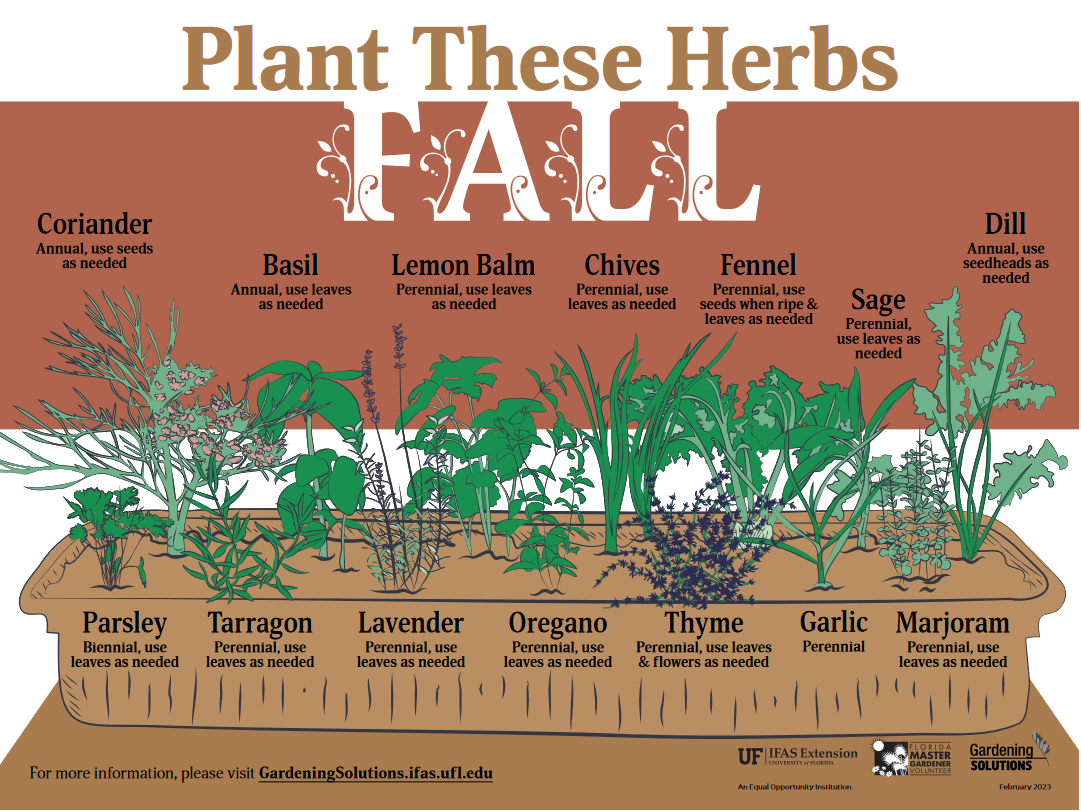
November and December are in the cool season, so we want to focus on growing herbs that do well in cool conditions. Luckily, several of them work well in our holiday dinners. Read on for more information about how to grow them and what kinds of holiday dishes to use them in.
Bay Leaf

The flat grey-green leaves we add to sauces come from the bay laurel (Laurus nobilis), which is a Mediterranean shrub or small tree. The tree is slow-growing and evergreen. It’s hardy to zone 8, and grows well here, though you may need to protect it in a hard freeze. Furthermore, it’s pretty enough that you can use it as an edible ornamental, snipping off fresh leaves to use or dry as needed. Use the leaves to flavor soups, stews and gravies, as well as stuffing and roast vegetables.
Chives
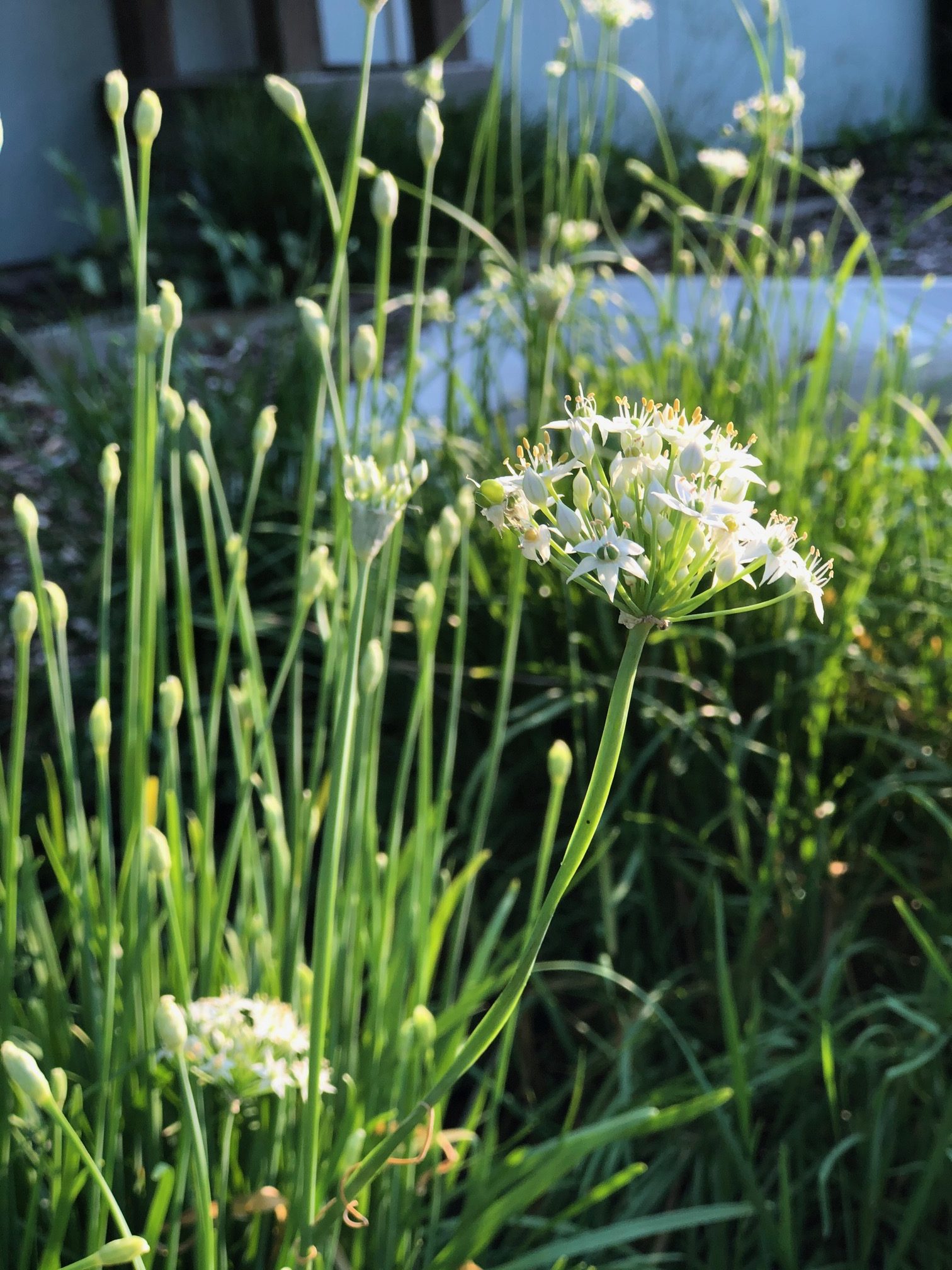
Many people are familiar with the mild onion-y flavor of the leaves of pink-flowered chives (Allium shoenoprasum). Did you know there’s a white-flowered relative (Allium tuberosum) whose leaves have a garlic-y flavor? Both are perfect for flavoring dips or sprinkling on top of vegetables, potatoes or salads, and both are perennials in Florida. Start them from seeds, sets or divisions from a friend’s garden. Once they get going, they tend to cover an area, so friends may have plenty to share. In addition to being tasty holiday herbs, they attract pollinators and make pretty landscape border plants too.
Dill
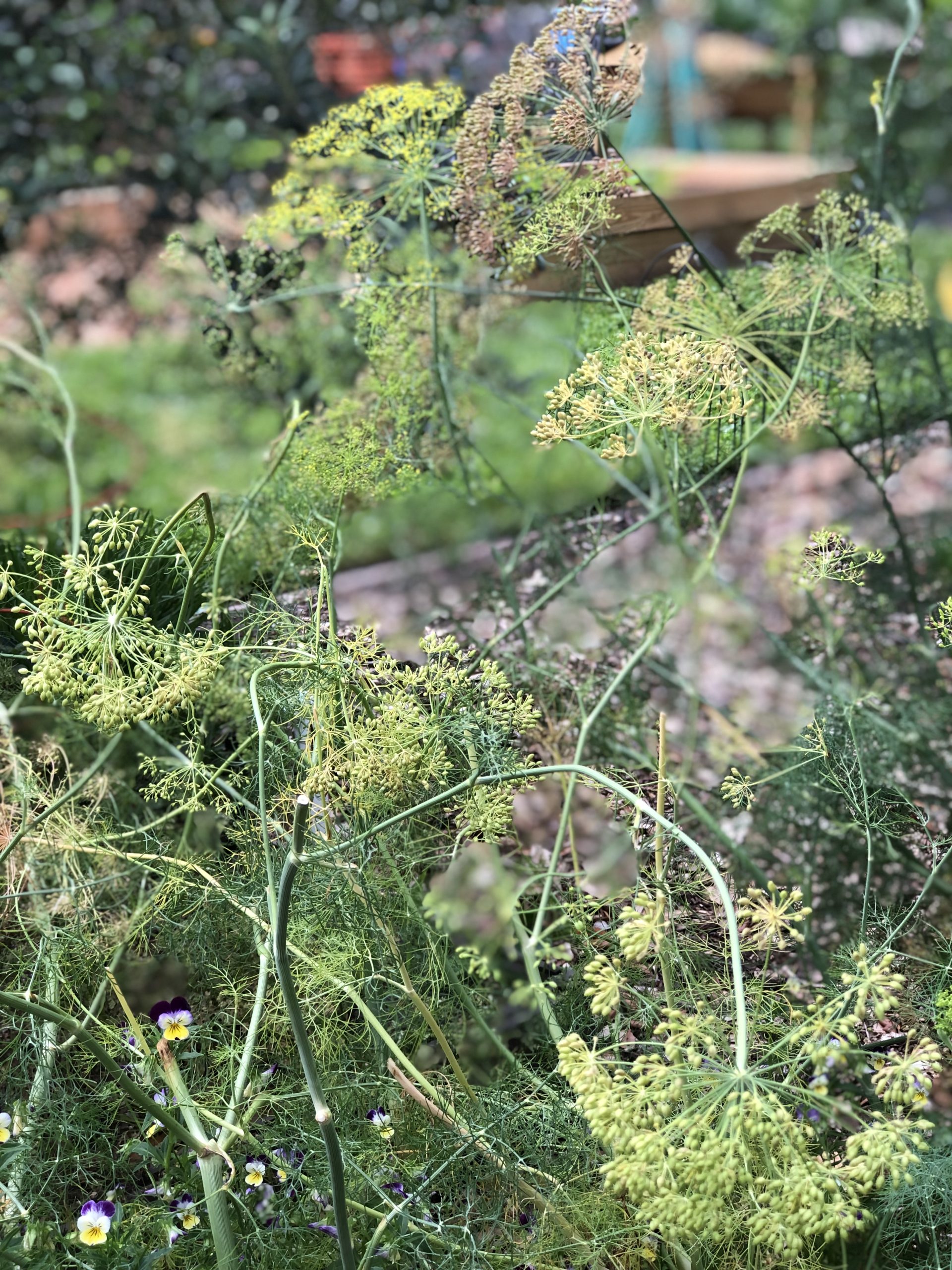
Dill, one of our most familiar herbs, is also one of the easiest to grow in the cool season. It is easy to start from seed, but can be grown from transplants as well. You might not immediately think of dill as a holiday herb, but there are lots of options besides pickles. Young leaves are also tasty in dips, dressings and salads. Dill also pairs well with seafood and tarter sauce.
In early spring you can share your dill with black swallowtail butterfly larvae, who feed on dill, fennel and parsley. Fortunately, the plants are large. If you have a couple, there will be enough for the caterpillars, and for you to harvest and save seeds for next year. It’s a win-win!
Fennel
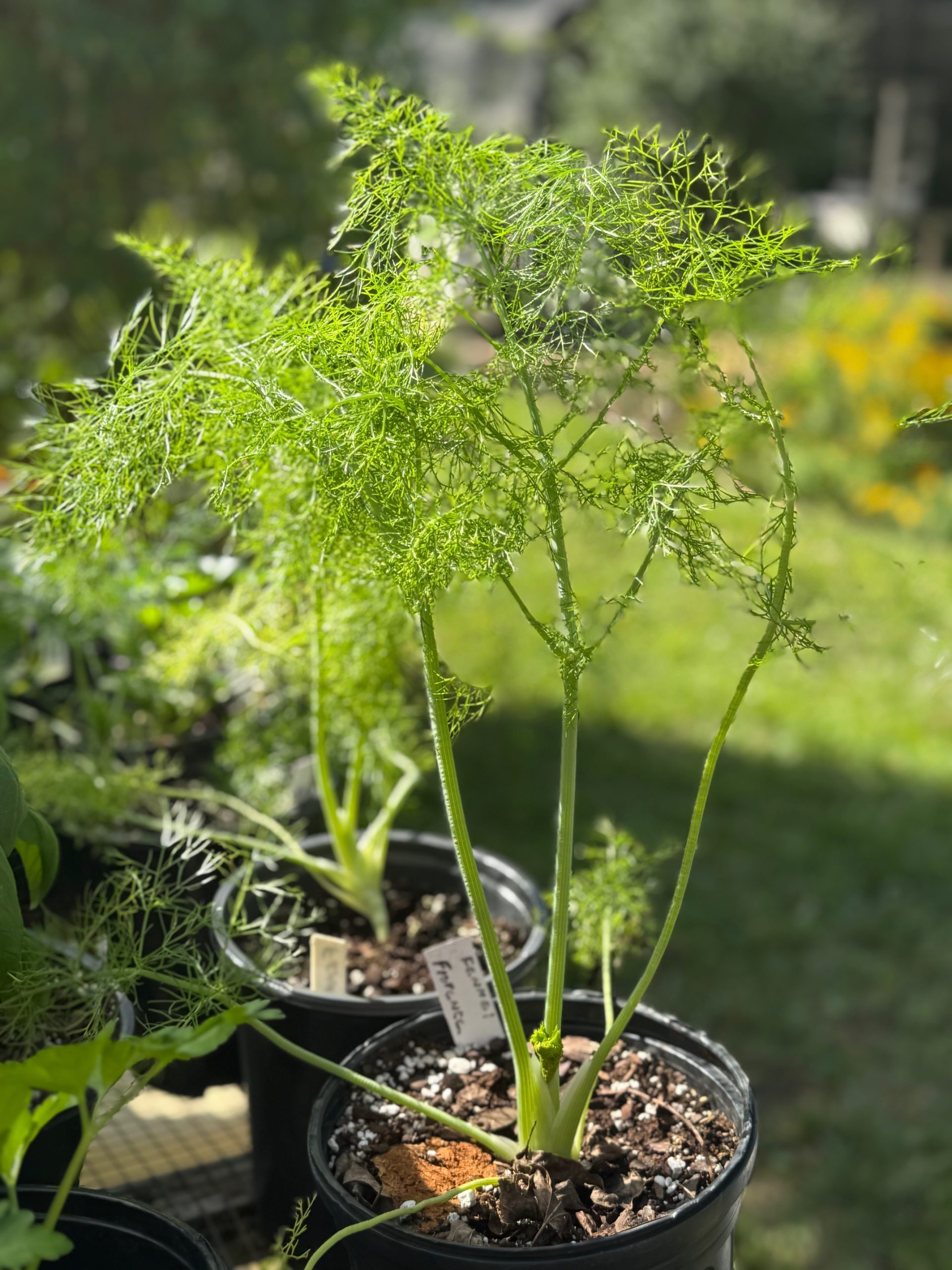
Common fennel (Foeniculum vulgare) plants look very much like dill plants and are also in the same family. One sniff of the leaves will quickly help you tell them apart! Fennel leaves give foods like salads, soups or eggs a slightly sweet and licorice flavor. Fennel seeds are what make breakfast and Italian sausage taste distinctive. Unlike common fennel, another variety, called Florence fennel or finocchio (Foeniculum vulgare var. azoricum), produces a bulbous leaf base that can be eaten raw or cooked as a crunchy vegetable. Saute it as a side, or add it to a salad. Unfortunately, you may have to grow Florence fennel from seed, since it is less commonly available in garden centers. In that case, it may not be ready for this year’s holidays, but you can try it nonetheless.
Ginger

You may be familiar with the many ornamental gingers we can grow in Florida, but the edible one (Zingiber officinale) grows very well too. It’s happy in shade to part sun and loves warm weather. It provides a nice tropical leaf during the summer, but the stems and leaves die back in late fall, reappearing only in late spring. Ginger is a key ingredient to pumpkin pie, and can add a spicy sweet flavor to cranberry sauce or sweet potato dishes. Purchase fresh rhizomes at the grocery store this year for your feasts, and plant a few extra two- to 3- inch pieces that have several buds outdoors in rich, moist soil where they will receive morning sun. Next year, you can harvest rhizomes from your own yard.
Parsley

Flat leaf parsley (Petroselinum crispum) is used to flavor many kinds of dishes. We grow it as a cool season annual here in Florida, either from seed or transplants. Make sure to plant parsley in full to partial sun and share it with the butterfly larvae. Add chopped leaves to salads, vegetables, soups or stews at the last minute to provide a fresh touch of flavor while maintaining that vibrant green color.
Rosemary
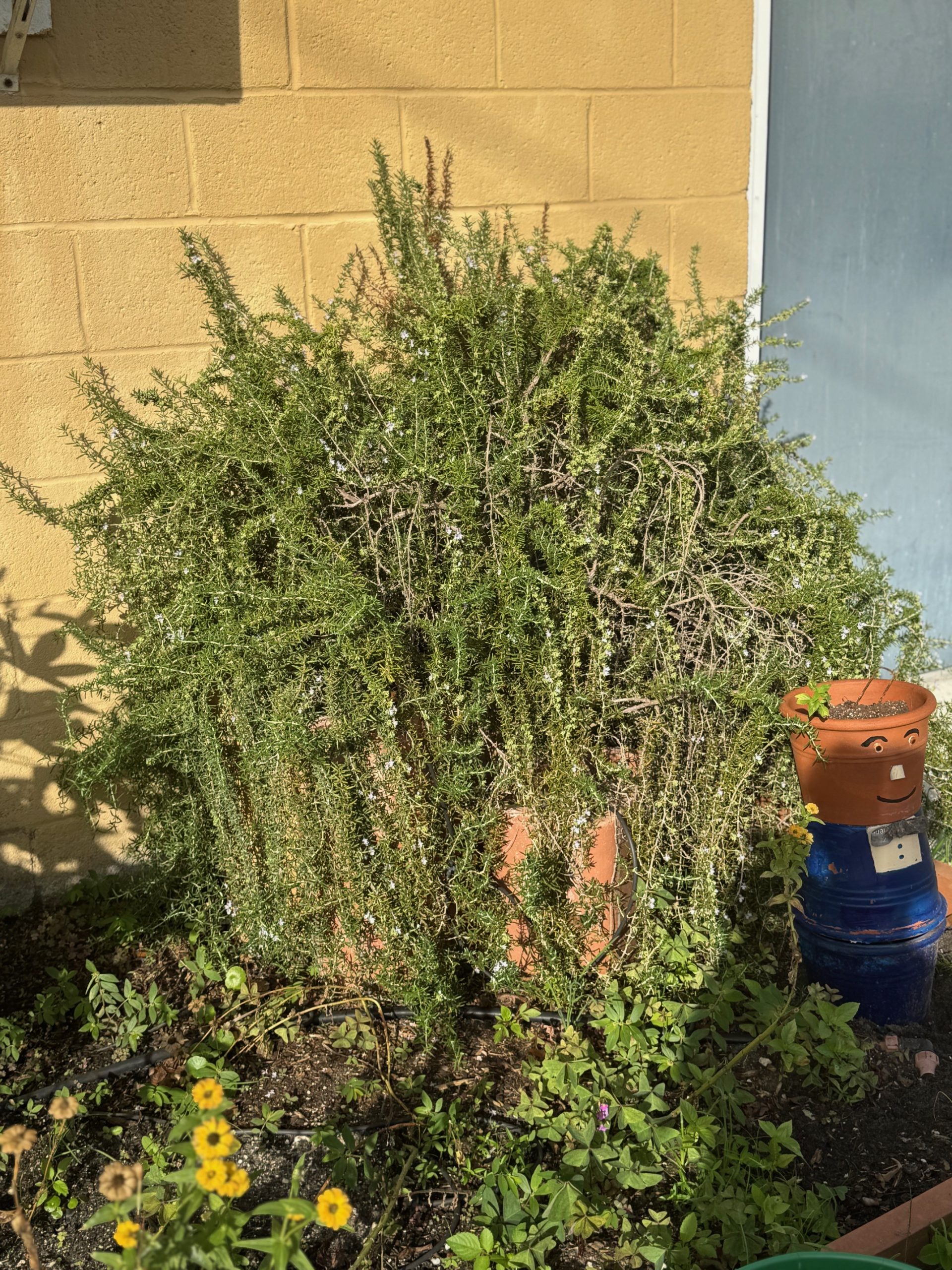
A beautiful, perennial evergreen shrub, rosemary (Salvia rosmarinus) is a wonderful edible ornamental in the garden. You may see small shaped plants in garden centers during the holidays. Plant them in the ground or in pots in full sun. Once they are established they are very drought tolerant, and they do better if they are not watered much. If happy they can grow 3 ft wide and tall. Snip off a stem and strip a few leaves off as needed or when trimming. Use them to flavor roasted holiday meats, breads or potatoes. Chop the leaves finely and cook them for best flavor; a little goes a long way!
Most varieties are upright and can be pruned to specific shapes. Prostrate, or trailing, rosemary is another variety to consider. It creeps along the ground, making a nice cover (slowly!), or it can climb along a trellis, fence or building. Like other varieties, it is hardy in our USDA Zone 9.
Sage
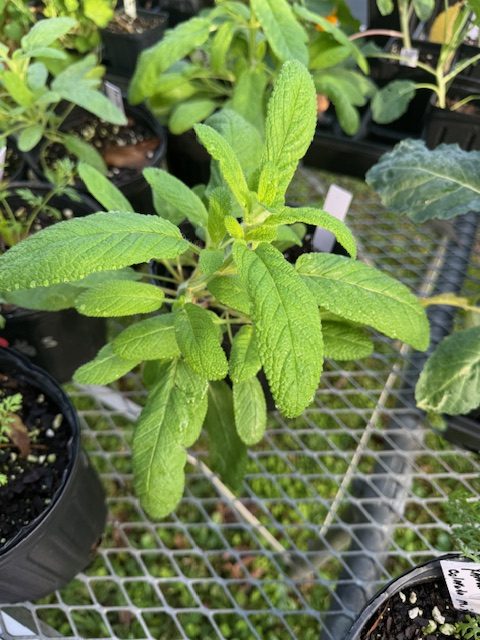
Culinary sage (Salvia officinalis) is a perennial herb that pairs well with turkey, sausage, stuffing and mashed potatoes. Strip the leaves off the tough stems and chop finely. The plant is a short-lived perennial. Its pretty flowers attract bees and other pollinators, but if you plan to use the leaves, trim stem tips to prevent flowering for better flavor. You can plant many other savlias, such as painted sage, and let them flower for a great cool season pollinator plant. Start sage from seed or transplants. It grows best in full sun and well-drained soil.
Tarragon
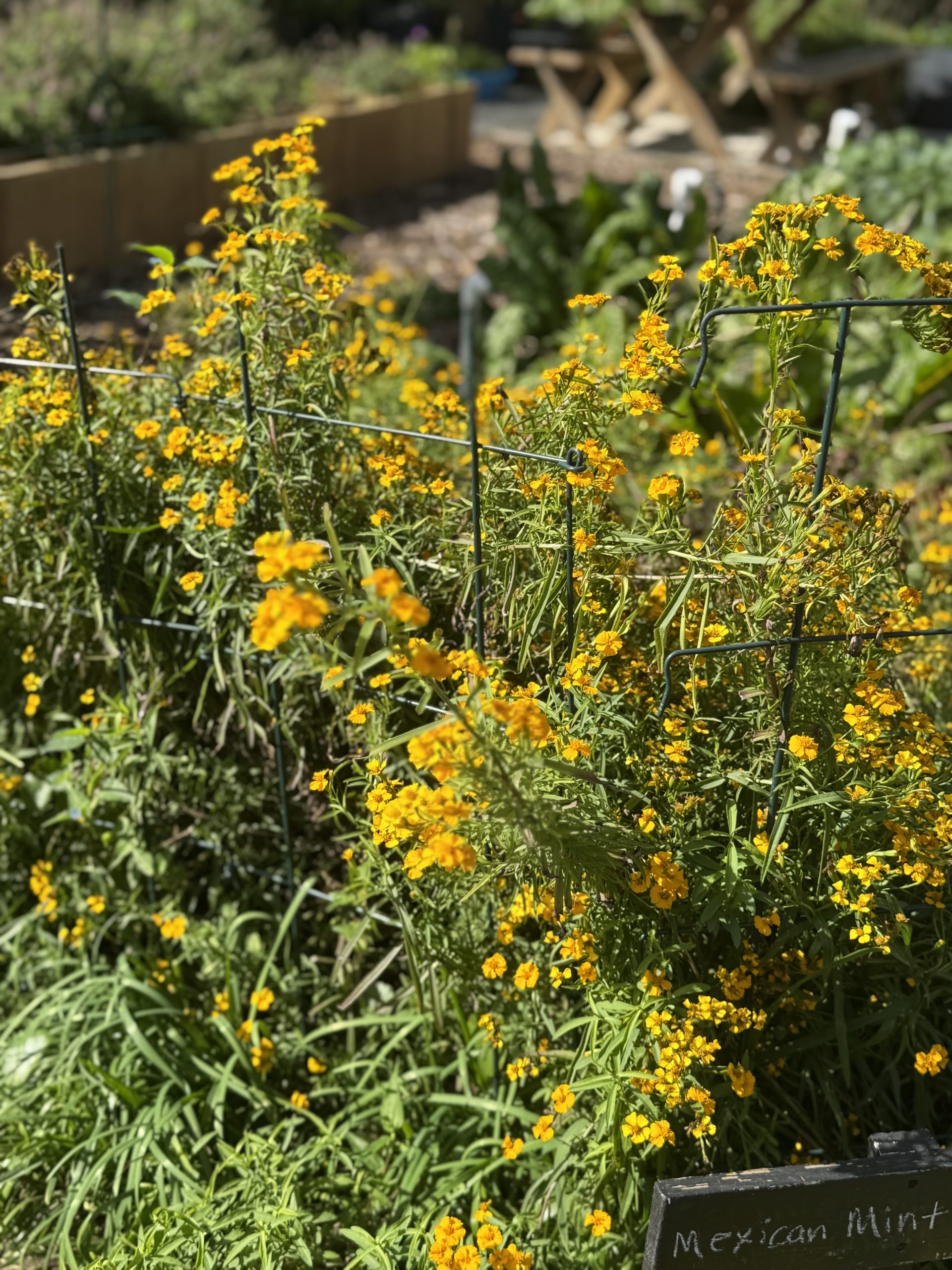
French tarragon is not easy to grow in our hot and humid Florida climate, but Mexican tarragon (Tagetes lucida) is a good perennial substitute that is easy to grow here and has beautiful yellow flowers every October. It provides a similar anise or licorice flavor. Use it to make French dishes or sauces like bearnaise that call for tarragon. You can also use it to make salad dressings or marinades and pairs well with chicken, egg and seafood dishes.
Start plants from seed if you can’t find transplants. If you plant it now, you will have more than enough leaves to use for next year’s holidays, and a beautiful fall floral display.
Thyme
Thyme (Thymus vulgaris) is a small perennial shrub with tiny leaves. There are many varieties with
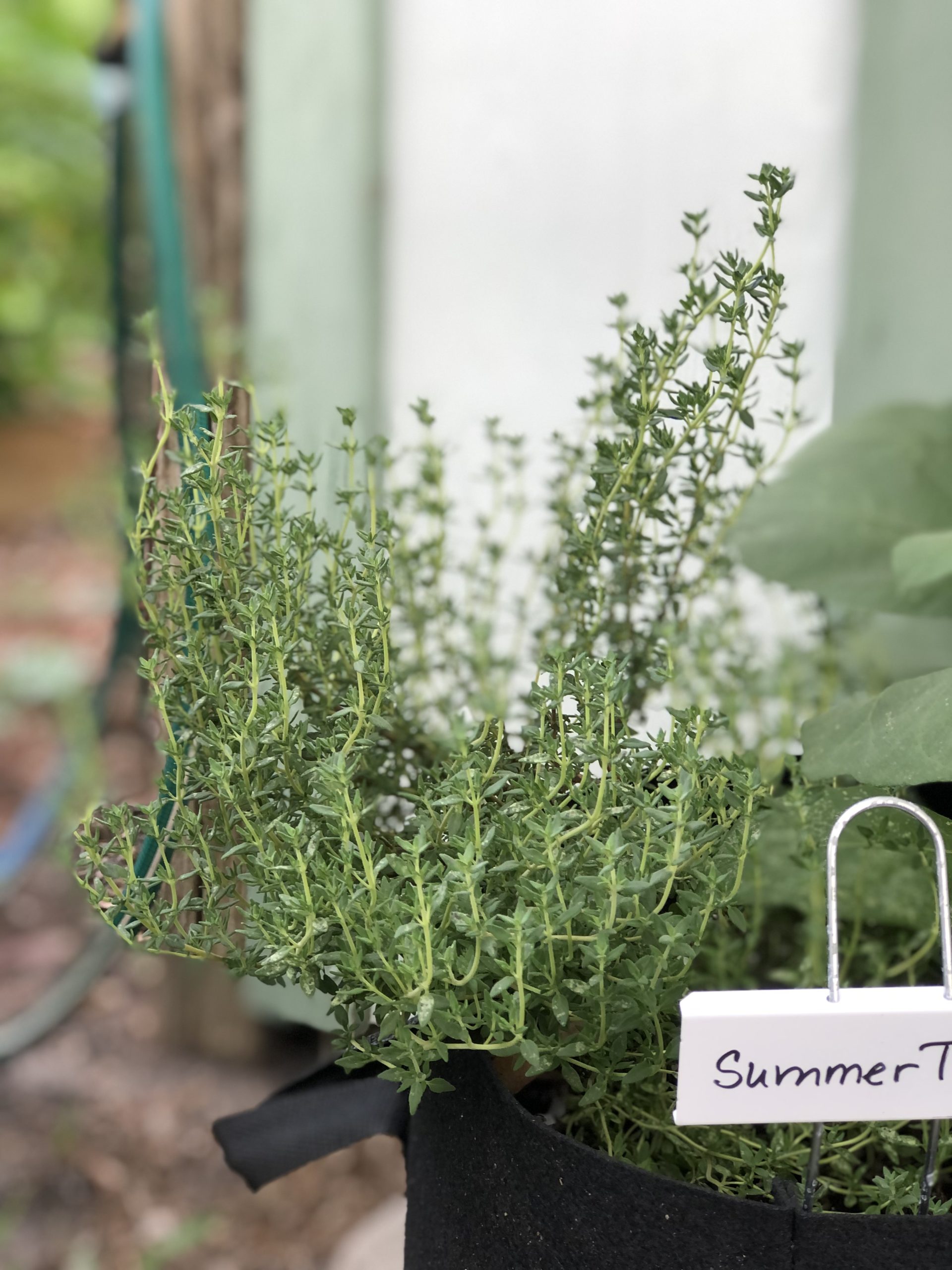
slightly different flavors. All are drought tolerant and prefer sunny dry spots in well-drained soil. Thyme can be grown from seed, but it is slow to germinate and grow, so if you are planning to use it in a holiday meal, purchase a transplant this year, use what you need, and then you’ll have a ready source in a pot or bed for next year. As you do for rosemary, strip the leaves off the woody stem and cook them for best flavor. Thyme works particularly well to flavor turkey and stuffing.
How can growing my own herbs save me money?
Both fresh and dried herbs are some of the most expensive items in the grocery store, often costing several dollars per ounce. Purchasing multiple herbs for the holidays could quickly increase your grocery bill. If you, instead, purchase a transplant of your favorite perennial herb and grow it for several years, you will save money each time you harvest some fresh leaves for cooking. The longer you grow the plant and use it, the more you will save. Many annual herbs are easy to start from seeds. The cost of a seed packet is often about the same as one clam shell of fresh herbs or bottle of dried. And most seed packets contain at least 25-50 seeds. You can harvest each plant you grow multiple times over a season, and many of them will provide more seeds to plant the following year. Whether growing annuals or perennials, herbs are one of the most cost-effective crops you can grow.
Most herbs are happy in pots, raised beds or in the ground, so whatever your gardening set up, you can usually make them work for you. Insects and other pests tend not to bother them. So, they’re typically easy to grow as long as you put the right plant in the right place. Start now and enjoy your own homegrown herbs for the holidays!
Where can I find more information?
For more information on:
- growing herbs and spices in Florida, see Herbs and Spices in the Florida Garden.
- using herbs and spices, see Shopping for Health: Herbs and Spices.
- culinary uses, see Cooking with Fresh Herbs.
 2
2
